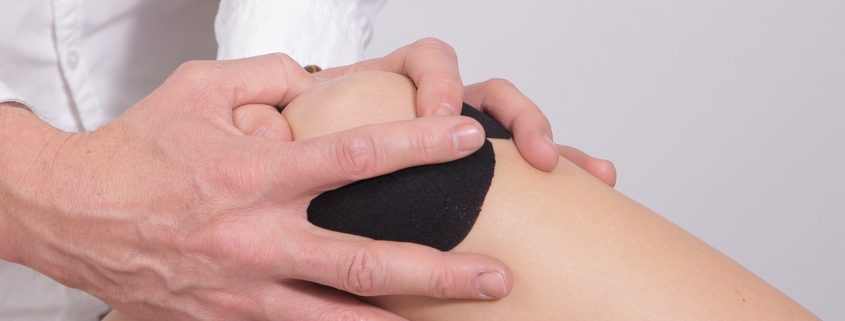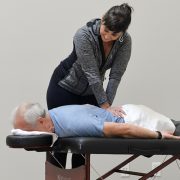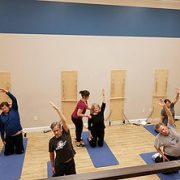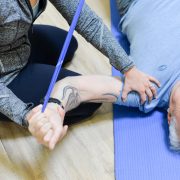3 Tips to Protect Your Knees as you Age
3 Tips to Protect Your Knees as you Age
Knee pain is the second most common musculoskeletal complaint behind back pain. It impacts one-third of all Americans at one time or another – and its prevalence has increased substantially over the last 20 years. These statistics indicate that it’s more important than ever to find ways to protect your knees as you age – so you can continue doing things you love – especially if you want to avoid major procedures or surgery.
Here are three tips to help you protect your knees as you age – so that you can stay active and mobile as you age – and hopefully avoid major procedures and surgery:
-
Strengthen your Hips and Core
Your knee joint is situated just below your hips and core. And doctors have found through research that when you have poor control of your upper leg muscles – you get more stress through your knee joint. The strength of your upper leg muscles is very much dependent on your hip and core strength. Your thigh bone – or femur – connects your knee and your pelvis – and your core strength controls your pelvis. If your pelvis isn’t stable – your femur is going to have a difficult time staying in alignment. This will ultimately have a direct stress on your knee joint – causing it to compensate in some way.
Additionally – your outer hip muscles – which include your glute muscles – also play a major role in how well your femur is positioned and stabilized. If you’re wanting to protect your knees and give them the best shot at remaining pain free and mobile as you age – you must strengthen your hips and core.
-
Mobility before Stability
Mobility before stability is my mantra. And I say this for just about every joint in your body. But it’s especially true for your knees. There are joints whose primary function is stability – and there are those whose major function is mobility. Your knee needs to be mobile. It’s major purpose is to bend all the way so you can squat and pick things up – and it needs to straighten all the way to give you stability when you need it. When either of these motions are lacking – your ligaments and surrounding muscles will suffer. A lot of folks just “accept” that their knees are stiff – especially if you’ve been told you have arthritis in your knees.
The limiting belief is that stiffness is par for the course. But the truth is that if you keep your knees mobile as you age – you can not only maintain the mobility you have but improve what is lacking. If your knees are stiff – start moving them. The thing to understand about arthritis is that it’s a normal part of aging. Debilitating mobility is not. Even a 10% improvement in your knee mobility – which most people don’t realize – can make a huge difference in your function. This can be the difference between a natural solution to knee pain vs undergoing a major surgery like knee replacement.
-
Work on your balance
The last joint we need to talk about when it comes to protecting your knees is your ankle. Much like your hips and core – if your ankles aren’t stable enough to help you maintain adequate balance – your knees will suffer. But another interesting thing about your ankle joint is that poor mobility can also impact your ability to balance. Let’s say you have stiffness when you squat. Many times this is due to inadequate mobility in your ankles. You’ll know this because you’ll feel a strain in the front of your shins when you try to deeply squat – or you may notice your feet and knees turn in. These are mechanisms your body uses to compensate – which if repeated over and over – will cause problems in your knees.
But how does squatting relate to balance? Well – if your ankle doesn’t flex enough – say in a deep squat – then that means your lower calf and achilles are being overstretched and compromised. Your lower calf muscles are extremely important when it comes to balance – and if they are overstretched or inadequately accessed – because your ankle is too tight – then your balance will be affected. In order to protect your knee joints and balance as you age – be sure you’re being mindful of both ankle mobility and stability.
So – let’s summarize…
If you want to optimize your knee health as you age – which you still can even if you’ve been told you have “advanced arthritis” – prioritize the mobility of your knees and ankles – strengthen your hips and core – and work on your balance.
Focusing on these three things can have a significant impact on the health of your knees as you age and help you to avoid major surgery.
Ready to get help with your pain?
Request to speak to one of my specialists to see if we would be the right fit to help you get out of pain. CLICK HERE to request a Free Discovery with one of my specialists.
Dr. Carrie Jose, Physical Therapist and Pilates expert, owns CJ Physical Therapy & Pilates in Portsmouth and writes for Seacoast Media Group.










